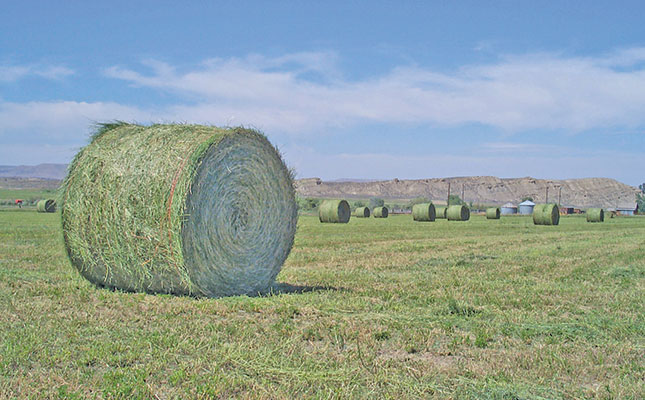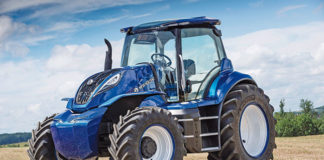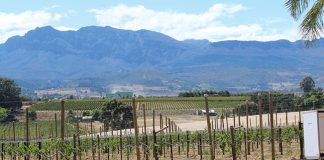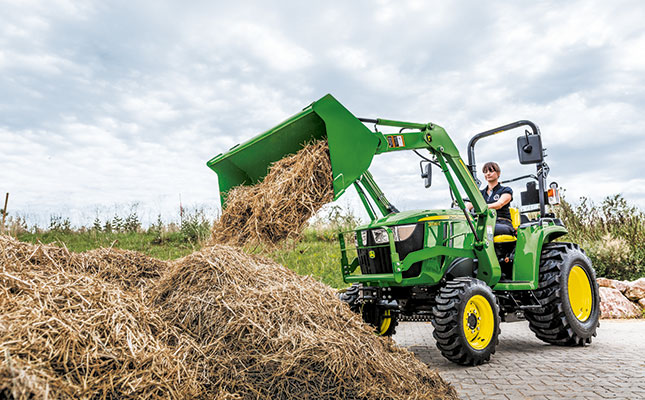
Photo: FW Archive
In the past, lucerne was considered a low-value pasture or rotation crop, and was primarily used as a supplement. However, in recent decades, it has become valuable and profitable, competing successfully with many higher-value speciality crops.
Today, many producers approach lucerne production as a serious business enterprise, with careful consideration of costs, value and markets.
Whether you produce lucerne hay to sell or feed to your animals, correctly assigning the economic value of the crop can impact the profitability of your business. Therefore, there must be a quality and grading system for lucerne hay that is fair to both producers and buyers, and one that, ultimately, represents the product accurately.
As the production and handling of lucerne has changed over the past 50 years, the National Lucerne Trust (NLT) decided in 2021 to implement its revised lucerne hay grading table for all near-infrared spectrophotometers (NIR instruments) registered at the NLT Hay Quality and Grading Scheme (NLT-Scheme). This was necessary to establish a more uniform lucerne hay quality and grading system.
Hay quality and grading scheme
The grading and marketing of lucerne hay in South Africa has historically been performed by means of subjective evaluation based on factors such as colour, leafiness, smell, and the presence or absence of foreign material and mould.
Traditionally, major emphasis has been placed on the production of high yields of lucerne hay. However, over the past 30 or so years, greater priority was given to producing a higher-quality product for the market, as the ultimate test of lucerne hay quality is animal performance.
Lucerne hay is typically much more variable in quality than grains and concentrated feeds. Several factors can influence its quality, including locality; seasonal variations in temperature and photoperiod; soil conditions; fertilisation; water supply; diseases and insects; harvesting; curing; handling; storage; cultivar choice; and the presence of other plant species.
In turn, lucerne hay contributes a high level of quality in an animal’s diet. Thus, the challenge was created for the South African lucerne hay industry to fix an economic value on a variable product.
Several indices of forage quality have been developed over the history of forage quality evaluation research, including relative feed value, total forage index, adjusted total forage index, forage quality index, and relative forage quality.
A study I led at the University of the Free State evaluated different parameters used to assess lucerne hay quality, and found large discrepancies in the accuracy of these parameters in predicting milk production of dairy herds.
The relatively poor performance of crude protein and other protein-related parameters in predicting milk production suggested that the protein content of lucerne hay is an unreliable indicator of hay quality.
The study found that by including acid detergent fibre (ADF), ash and lignin in a multiple linear regression equation, the accuracy in predicting milk production with the Cornell Net Carbohydrate and Protein System (CNCPS), which estimates cattle nutrient supply using various factors, improved remarkably.
This then formed the basis of the empirical model called the New Lucerne Hay Quality Index (NLQI). The NLQI was found to be the most practical, economical and accurate quality-evaluation model for commercial application.
Although the NLQI was developed on potential milk production, ranking of the index is based on digestible energy content or production potential. This is universal among all species that utilise lucerne hay.
During 2008, the NLQI, as well as the original grading standards table (see Table 1), was implemented through the NLT-Scheme. The NLQI that appears on the NLT certificate integrates nutritive value metrics and animal production in a single value.
The NLQI has since been widely used to determine the quality of lucerne hay and therefore add some objectivity to determining a market value. It has become a tool for ranking the quality of lucerne hay and for matching said quality with an animal’s nutritional needs.
Market potential and challenges
The South African lucerne hay market price fluctuates widely, and greatly depends on supply and demand. Lucerne hay produced locally (see graph) and certified by the NLT during 2020/21 increased by around 38%, 48% and 50% compared with production certified during 2014/15, 2015/16 and 2016/17 respectively.
The increase in lucerne hay certified by the NLT over the past few years is mostly the result of more producers, traders, exporters and end users using the NLT-Scheme to grade their lucerne hay, and not necessarily because there has been an increase in the actual production of the crop in South Africa.
The past two production seasons have been challenging in terms of quantity and quality of hay, specifically in the Northern Cape. Lucerne hay produced during 2020/21 (416 862t) and 2019/20 (409 759t) decreased 5,7% and 7,2% respectively when compared with 2018/19 (441 976t).
Reports received indicated that hay producers couldn’t achieve the maximum potential yield and quality expected from their hectarage due to erratic weather conditions and excessive rain. A further decline in lucerne hay production is expected for the 2021/22 season.
Dependence on lucerne hay for animal feed will continue to drive the South African lucerne hay market. However, in recent years, exports of the crop have transitioned from a footnote to a major factor for the local industry. Several major drivers have boosted this growth, including the advent of inexpensive containerised shipping, hay-compression technology, and accurate quality analysis of South African hay.
South Africa exports lucerne hay to Saudi Arabia, United Arab Emirates, Qatar, Botswana, Namibia, Lesotho and, most recently, China. Approximately 150 000t, or nearly 40% of the total local production certified by the NLT-Scheme, are exported annually.
The export market for South African lucerne hay is expected to expand as demand in Middle Eastern countries and China continues to climb on the back of strong growth in the popularity of dairy products, as well as the production limitations, including water supplies and logistics, in these destination countries. A growing demand will usually translate into firmer prices for lucerne hay producers.
While the market for South African lucerne hay is not as volatile as those of other higher-value commodities, the fluctuations are significant enough to have an influence over whether lucerne is a profitable crop option or not. However, the local lucerne hay producer price has seen an upward trend over the past number of years.
Revised grading system
The demand for low-fibre, high-quality hay has intensified throughout the livestock sector. Thus, the importance of hay quality, and quality standards, is likely to intensify in the future.
To illustrate the large variation and consequently the financial implication within the original grading standards table, a simulation programme was used to calculate the difference between the NLQI values of 103 and 97.
A basal diet for lactating dairy cows was formulated using a modified version of CNCPS. It was based on the milk production level, feed ingredients, and dry matter intake (DMI) of a typical high-production South African commercial Holstein herd.
The age of cows was assumed to be 42 months, with an average body weight of 700kg. Cows were open, and had calved 60 days before. The body condition score was 3, and the average daily gain was 0,079kg. Milk production was at 45ℓ/day, and milk fat and protein were at 3,55% and 2,88% respectively. Ambient temperature was 20°C and relative humidity was 50%, with no wind or other sources of environmental stress.
Milk yield derived from the CNCPS indicated that lucerne hay variation within the original Grade 1 led to enormous financial differences by replacing the average lucerne hay in a complete diet.
To put the financial implications into perspective, these assumptions were made:
- Lucerne price for Grade 1 = R2 600/t;
- Producer milk price = R5,25/ℓ;
- Daily lucerne DMI: 8kg/cow/day.
A 2ℓ drop in production was calculated when lucerne hay quality dropped from NLQI 103 to 97, which were originally both classified as Grade 1. The difference in production between the lower and upper spectrums of the original Grade 1 had serious financial implications for the end user (lucerne DMI of 8kg/cow/day equates to a lucerne feed cost of R20,80/cow/day).
The initial index cut-off points for the different grades on the lucerne hay grading table was guided by the lucerne hay quality standards set by the US. To put this into perspective, as late as the 1950s, the highest-quality category described by the US Department of Agriculture (USDA) could contain significant bloom and up to 49% seed pods.
Today, most high-quality dairy hay is harvested at the pre-bud to bud stages. In 1972, 52% total digestible nutrients (TDN) hay (below 33% ADF; 100% DMI basis) was considered excellent-quality dairy hay. Today, many nutritionists consider high-quality dairy hay to be above around 57% TDN (below 29% ADF; 100% DMI basis).
In 2002, the USDA developed guidelines for classifying hay quality into five categories. They have been revised over the years, and help establish a more uniform national lucerne hay quality and grading system in order to provide local and international consumers with improved estimates of the feeding value in terms of animal production prior to purchase, and to better align local and international quality standards (see Table 2).
The Supreme quality category was also added, giving the producer the possibility of an additional price premium for producing top-quality lucerne.
The standards set for lucerne hay used at different production levels are universal and should be used accordingly. The new revised standards are basically just a formality for non-official arrangements that have already been implemented by most of the buyers in the past two years.
Email Sunet Vermeulen-Fenthum of the National Lucerne Trust at [email protected]











